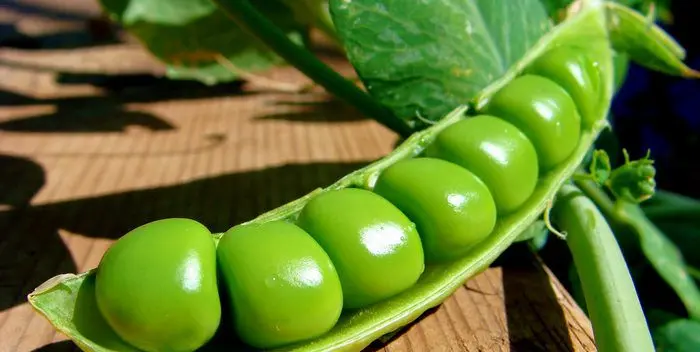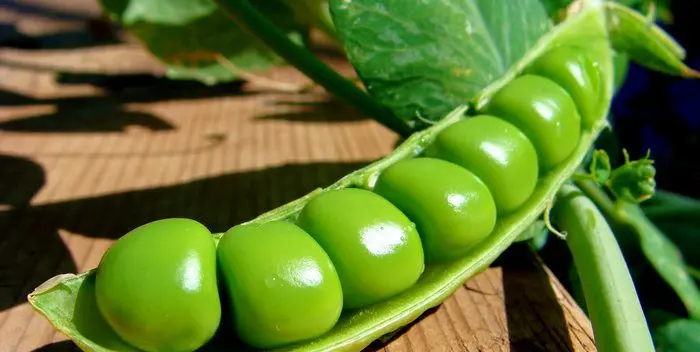
How and where to store peas correctly?

The way peas are stored depends on their type. The conditions required for fresh and dry varieties will differ. When stored properly, even fresh peas in pods will retain their juiciness for a long time. Dry peas should not be stored in the refrigerator, and fresh peas should not be stored outside the refrigerator.
The nuances of storing dry peas:
- if the peas are purchased dry, then they must be stored in the darkest possible place, which is regularly ventilated and does not differ in high humidity;
- dry peas can be stored in almost any container, including glass jars, containers or cloth bags;
- so that the peas do not deteriorate and retain their structure, it is recommended to put a small homemade cloth bag filled with ordinary salt in the container in which it is stored;
- it is necessary to store peas only in dry form (wet peas will deteriorate very quickly and mold, rot or parasites will appear in it);
- pea grains should be crumbly (if they stick together, then the peas were either stored incorrectly in the store, or after they were purchased);
- if peas are stored in packaging from the manufacturer, then after opening it, the grains must be transferred to a new bag or container, which is closed with a lid;
- you cannot store peas on shelves that are near a gas stove (under the influence of heat, peas will quickly deteriorate and become unsuitable for eating);
- during storage, dry peas should be regularly inspected (if signs of rotting, mold or foreign odors appear, then you should get rid of the peas and not use them for cooking);
- if insects are bred in the peas, then you should not try to rinse and eat it (bacteria in this case will be not only on the surface of the peas, but also inside the kernels);
- if the peas are dried at home, it is important that the grains are necessarily ripe (overripe peas will become even harder after drying, and unripe peas will change their taste properties).
Fresh green peas can be preserved in three ways:
- preserve (there are a lot of preservation methods);
- freeze (peas are well stored in the freezer and do not change their structure, they must first be removed from the pods);
- dry (before carrying out the drying process, it is necessary to boil the peas for 2-3 minutes in boiling water, dry, and then carry out a long drying in the oven at a temperature of 60 degrees for several hours).
Dry peas made by yourself and the product bought in the store will look different in appearance. In the first case, it will be slightly wrinkled and have a dark green tint. In the second version, the peas will be smooth, with yellow or green kernels of the same size (depending on the variety).
How much to store peas
The storage duration of peas depends not only on the conditions that were created for this, but also on the species. If peas are bought in a store in dried form, then you need to focus on the information on the package. Fresh green peas do not last long in pods, so after a few days you need to decide which way to preserve them.
Peas shelf life:
- fresh green peas in pods are stored for up to one week (without pods, they are stored much longer);
- frozen peas (in pods or without them) are stored in the freezer for 10 months;
- fresh green peas without pods can be stored for more than 6 months (provided there is sufficient air and no exposure to direct sunlight);
- canned peas are stored for 1 year (in this case, the period can reach several years, depending on the observance of the rules of preservation and subsequent storage of cans);
- dry peas can last for years, but are best eaten within 1 year.
It is recommended to store peas at home using jars with metal lids or in special vacuum containers for cereals. The key to long-term storage of any peas is its dryness. As soon as the humidity of the air increases or condensation appears in the container, the kernels deteriorate at a rapid rate.









